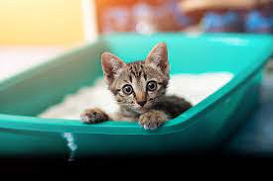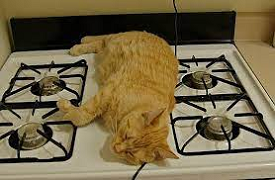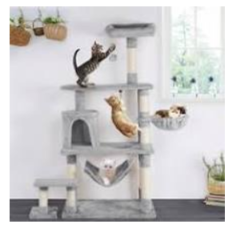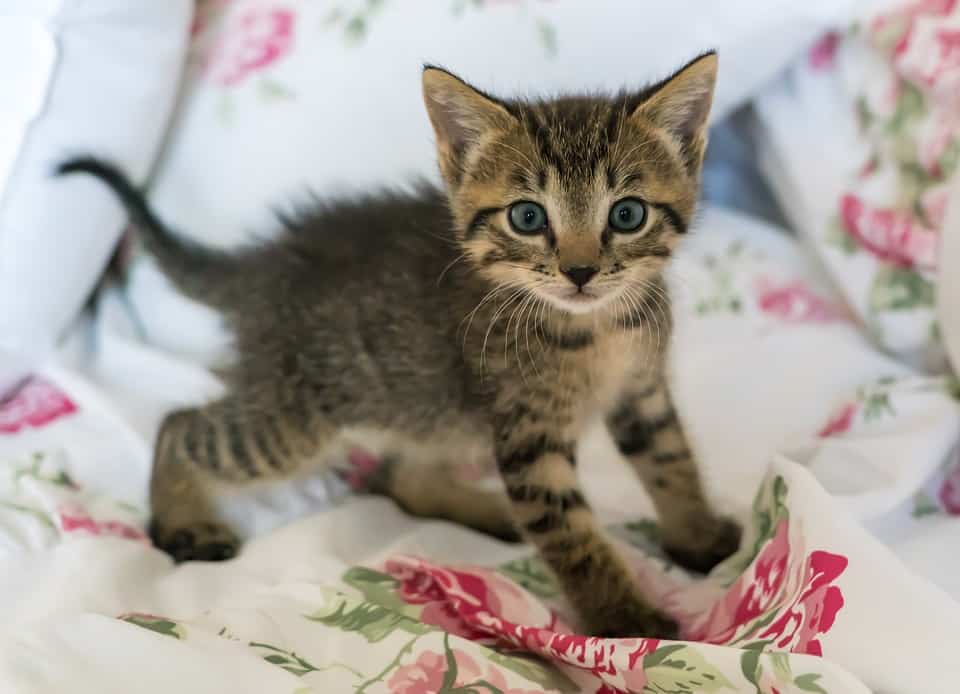Ready to bring that cute kitten home? Here are some essential things to know about kittens: First, kittens are supreme experts at getting people to fall in love with them in one glance, so be prepared for that if you go to simply have a peek at kittens, you will likely return home with one or more.
The most common season for kittens to be born depends on your geographic location, but in the United States it ranges from April through October.

Kittens make better pets if they stay with their mother until 8 to 10 weeks of age. This is the time that their normal physical and social development matures. Sometimes people will find kittens that are orphaned or in miserable shape and take them home. They will likely make good pets, but single bottle-fed babies may not have the best social skills, so be prepared!
The Big Surprise
Kittens can have kittens.
That’s what most cat owners don’t understand. Cats and kittens are far more like the rabbit’s reputation for reproduction than the dog’s. Technically, felines can have up to five litters a year, starting really, really soon after they leave their mother at about 5 months of age.
Female kittens begin their cycles when they are 80% of their adult size, which can be as young as 4 months of age but is typically closer to 6 months. Many cat owners don’t realize this, so if your kitten is allowed outside or there is a young neutered male cat at home, the situation can quickly get out of hand.Kitten facts:
- Cats can get pregnant during their first heat.
- A cat can go into heat as often as every 2-3 weeks all year.
- Unlike dogs there is no bleeding to indicate she’s ready.
- Unless she’s spayed, she will continue to go into heat her entire life. Cats don’t experience menopause.
- Usually you can tell if she’s in heat by her behavior. She will vocalize more loudly than usual (look up caterwaul in the dictionary) while calling to potential mates; lift her rear end up in the air; be more affectionate than usual; roll around the floor; and try to escape the house to go find a mate. The symptoms can last anywhere from a few days to a couple of very long, loud weeks
- She can get pregnant again within a few weeks after she gives birth. Nursing does not prevent conception.
- The feline reproductive system is seasonal and cats are designed to give birth when it’s warm, spring through early fall.
To avoid this situation, make sure your kitten stays indoors until she is spayed, and keep her away from intact males even if they are young. Talk to your veterinarian about the best time is to spay your kitten.
Indoor or Outdoor Kitty?

You can take indoor cats outside for walks on feline-specific harnesses and leashes. You could also create an outdoor cat enclosure called a catio, which can attach to your home so they can go in and out at will. If you decide to keep your kitten/cat indoors only, never let them out by themselves; if you allow “once in a while” forays into the great outdoors, do not assume they will remain in your yard.
One decision you need to make right off the bat is whether or not you are going to allow your cat outside or if your kitten will be indoors only. While cats that go in and out often enjoy the freedom that comes with it, keep in mind that their life expectancy is usually shortened due to the hazards of being outside on their own. Indoor-only cats are safer because they don’t get hit by cars, have fights with other animals, or become prey. If your cat is kept inside, they need more environmental enrichment to keep them occupied and happy. Cat trees, toys, climbing shelves, scratching posts, wind up things to chase can add a lot to a cat’s life.
It’s your choice whether your kitten is indoors or goes inside and out. When making this decision, balance the potential dangers outdoors against possible boredom, stress issues, and weight gain indoors. Understand that your neighbors may not be happy about a cat defecating in their yard or bothering their indoor cats. Cats that go outside should be vaccinated yearly against feline leukemia virus and have an FIV/FeLV test done yearly to ensure they have not become infection with feline immunodeficiency virus or leukemia virus.
Equipment you will Need Day One
If your kitten is a planned acquisition and you have time to get ready – as opposed to finding some poor scraggly thing late at night in the rain hiding under your car – there are a few basics you should have at home by the day you bring home your kitten.
The things you must have immediately for a kitten are food, food and water containers, and a litter box filled with litter. Initially, you can use any bowl for water and food, but eventually transition your kitten to a ceramic of glass dish. Also, you can add food toys and puzzles for enrichment.
Food specifically made for kittens is necessary (puppy and dog food does not have enough protein or taurine for cats to live on and you definitely need litter boxes and litter as soon as you possibly can. In a pinch, a cardboard box filled with shredded newspaper or sand will work short term.
If you know what your kitten was eating before arriving at your house, use that same food. If you’d like to change to something else, mix the two foods together, gradually increasing the percentage of the new food over a few days or a week. If you have no clue what the kitten was eating, then any completely balanced kitten food will do (ask your veterinarian for a recommendation; see more on food below).
Cats are obligate carnivores, meaning they must have a meat-based diet. They break down protein to meet their blood sugar requirements, not the carbohydrates that people use. The overall effect of your cat’s nutrition can usually be seen in your cat’s health; spending more on well-balanced food usually translates to fewer veterinary bills. Cats also tend to do better with canned diets as it contains more moisture and imp[roves their overall hydration.
Litter Box and Litter

You will be amazed at how quickly a kitten takes to using a litter box. It will make more difference in how well your kitten adapts to your household than anything else you provide. Note that these are two items, not one: a box and litter, both of which come in numerous types.
Many cats prefer much larger litter boxes than what are sold in pet supply stores, something like a concrete mixing tub found at hardware stores, but for a kitten you can start out with a standard sized box. For one feline, have two boxes in different locations. Some like the boxes to be on different floors, or at opposite ends of the house. Most dislike having them adjacent to the washing machine and dryer, and they don’t want it near their food bowls.
Each box should be scooped clean once or twice every single day, and the litter in it should be replaced every one to two weeks. When you are replacing the litter, wash the empty box with a fragrance-free detergent and make sure it’s dry before new litter is put in it.
Dirty boxes contribute to behavioral problems in which cats urinate or defecate outside the box. Sometimes they get in the habit of going outside the box in a way that is appropriately called inappropriate elimination. You want, with all your heart, to prevent your kitten from becoming one of those cats.
Inappropriate elimination is one of the main reasons cats are surrendered to the shelter because it is difficult to live with the odor and cleanup of cat urine. The best approach is to prevent it from happening.
Cats typically prefer non clumping litter in open (non-covered boxes). Litters that are dust and fragrant free lead to less respiratory complications. There are also natural biodegradable and renewable sources such as corn, wood, pine, wheat, cedar, recycled paper products, etc. as well as flushable litter. But check your local ordinances first, as some cities do not allow flushing of pet feces.
Behavior: What is Acceptable, What isn’t
Remember that what is cute from a kitten is not likely to be cute with an adult cat. However, with some work, kittens can be trained. You can train a kitten to use the litter box, to come, to kill the toy, to jump on command, and so on. Use treats to teach them to come by shaking a can of something tasty, so when you need to find the little Houdini you can entice them to come running to you.
Bad behaviors to be avoided are play-biting your hand or pouncing on your moving feet. While this is cute when they are 3 months old, it’s not so cute in a larger adult cat. It can make your home an unwelcome place for your friends, too. In short, whatever you want to prevent in your adult cat should not be taught to your kitten or you may suffer the consequences for 15-plus years!
Food
Adult cats really aren’t that picky, it’s just that kittens imprint on what you give them so they seem finicky. They need to be introduced to different foods when they are kittens. If they ever become sick, their salvation may rest in their ability to eat something different, such as therapeutic canned food or kibble that has a different taste and texture. Cats like different types of canned foods, different kinds of meat, dry food, and dehydrated food.
They can have one good quality food that is their normal fare, but who knows when you might run out of food or evacuate from a natural disaster and you want to give something like chicken or fish. If they have urinary problems because they don’t take in enough water, they will do better with canned food. If your cat isn’t used to canned food, it can take a while to get them to switch to wet. Introduction when they are younger may be very advantageous in the years to come.
Regarding the form the food comes in, whether canned of kibble, cats have taste and texture preferences, and you should see what they like best. If you choose kibble as their main food source, it’s best to have some water in their diet, so giving at least some canned food every day is a good idea. Change up flavors and textures regularly even in canned – pate vs. shredded – and your adult cat will be much easier to work with should they get sick. Additionally, multiple water dishes with some circulating can encourage drinking, which will benefit your cat as he or she becomes older.
Vaccinations
Neonates of every species are born with immature immune systems. Usually, nature provides protection with antibodies found in the milk the mother produces for the first few days after giving birth, but not all cats have good maternal antibodies and not all kittens get nursed and/or get the colostrum (the protective portion of the mild). While maternal immunity is in the kitten’s system, any vaccines given will be inactivated. Vaccines will not be able to “take” until maternal antibodies have sufficiently dropped.
Vaccinations typically start or take place from 4-6 weeks of age, and then every 3 weeks based on lifestyle, to about 4 months. The reason for re-vaccinating is due to the window of susceptibility – when maternal antibodies wane – which can be at varied times in kittens, not because a vaccine works better after the prior one. By 14-20 weeks of age, maternal antibodies are gone and the kitten must be able to continue on their own immune system. Kittens receive a series of vaccines ending at a time when we know the baby’s own immune system should be able to respond to those vaccines.
A kitten’s vaccination schedule is staggered because vaccinations produce a much greater response if they are boostered approximately 3 weeks from the previous vaccine.
What vaccinations your kitten needs, and when, is often determined by your geographical location. Veterinarians follow the recommendations of the American Association of Feline Practitioners. You can Google this group and view its recommendations.
Preventive Measures
Kittens should be dewormed with pyrantel pamoate, fenbendazole, or milbemycin at 2,4,6, and 8 weeks of age, then monthly until whatever age your veterinarian recommends. Recommendations for ascarid (a type of worm) control in kittens older than 6 months of age vary.
The Companion Animal Parasite Council recommends using parasite control products effective against ascarids monthly, this can be found in products such as Revolution and Advantage Multi which protects cats against heartworms, fleas, ear mites as well as ascarid parasites.
Enrichment
As mentioned before, environmental enrichment is needed, especially for indoor cats. It helps Environmental enrichment during kittenhood prevents behavior problems during adulthood. Kittens like to play with crinkle balls or bells that make noises.
Maybe they didn’t have those toys where they were born, so start building their enrichment with those items. Scratching boards, run through tunnels, jump into cardboard boxes, squeak dog toys, and so on can make your kitten’s life fun and adventurous. A mysterious love of cardboard boxes is a life-long passion with cats – they tend to love jumping into these. Kittens like to climb, so carpeted cat trees are fantastic toys, especially when adjacent to a window to the street.
Kitten-Proofing

Help them help themselves by keeping a safe home for them. They will not understand why you need to kitten-proof the house. Because baby kittens are quite able to get to the top of tall dressers or kitchen cabinets, your baby-proofing has to be in higher to reach places too. Kittens have no sense of their own mortality and should be considered a danger to themselves.
Supervise closely and do not leave them unattended around burning candles, open windows, outdoor balconies, etc. At around 10 weeks, kittens start to practice the art of pure kitten terror: They get cuddles, they get kisses, they get bold and courageous and jump off things, dash underfoot, chew cords, jump on the hot stove, and attack the dog. This period may last a few months.
When your kitty is still tiny, double check the washer, dryer and dishwasher before you start them because this may seem like a perfect nap place for a kitten.
Keep certain “toys” – as they will be viewed by the kitten – out of reach, such as string, yarn, milk-jug bands, hair bands – these can be swallowed by kittens and cats alike and often causes a foreign body obstruction with the bunching up of intestines and requires surgery quickly.
Start out by giving the wee one a small space, perhaps a bathroom or laundry room, shut off by doors or gates (remember to first check if the kitten is small enough get through the gate slats, because they occasionally seem to go boneless).
They should feel safe and comfortable in the small space before they get more space. As your kitten grows, gradually expand their space and gain familiarity with the house. That way they don’t lose track of where the litter box is. Houses can be very, very big to small kittens. They are also adept at finding the tiniest, most tucked away sleeping spots (think of the recliner) so a smaller search area will likely save you some moments of panic searching.
Don’t let them have free run of the household without supervision. If they get into trouble, they are back to a room with a closed door.
Scratching

and hideaways
Scratching is a natural behavior of cats. They do it for a couple of reasons, one of which is to mark their territory. They have scent glands on their paws. Scratching removes old nails and allows growth of new ones. Since their nails are their primary method of protection as well as their hunting weapons, they have an instinct to preserve them.
They’ll scratch on anything, including your furniture and curtains, so direct them to scratch on appropriate materials, specifically scratching posts. If you get a cat tree, get one with a scratching post, and put a couple of scratching posts around the house.
Hunting
Cats are natural predators. Hunting is hard wired in them, and there is no way to eliminate it. It has nothing to do with how well fed they are; they like it, and don’t need to be hungry to hunt. Feral cat mothers bring home dead or injured prey to teach their kittens how to eat. By leaving you a dead rodent, your kitten is taking care of you. You can indulge their instinct with certain toys, but there is nothing like live prey. Do not be surprised or unhappy if your kitten brings you a dead “present.” It is a gift from the heart.
Cat Carriers

Unless your kitten arrived as a stray or in a cardboard box, you may already have a cat carrier, but if you don’t you will need one. Your cat will have to go to the veterinarian sometimes, or you may move, your house may catch on fire, or you may need to be evacuated from a natural disaster.
There are many types of carriers: some open in the front, or on top, or both, some come apart, and so on. You can train your cat to accept it. It’s much safer for your kitten in there than being held in your arms where they can jump out. You can leave it out all the time, and sometimes toss treats or toys in, so when it is time to go your kitten does not feel that they are being shoved into some random alien space station.
Also, get your kitten microchipped and don’t forget to register the chip unless your clinic does it for you. Lost cats are returned to owners at much lower rates than dogs in part because of a lack of identifying information (i.e., microchip, collar with tags).
Making an effort to provide your kitten with the tools for a good adult life will pay off for the rest of the cat’s life. From the day you bring them home, your life will be enhanced by your relationship with this fun, playful species!


